Supermarine S.4
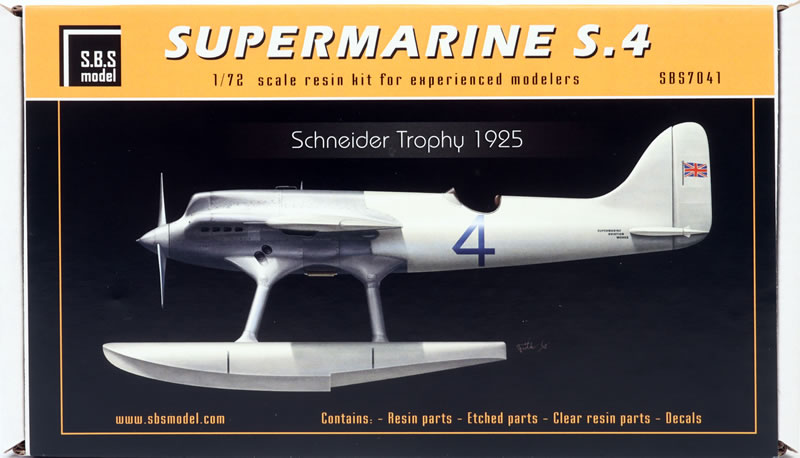
S.B.S. Model, 1/72 scale
S u m m a r y : |
Catalogue Number, Description and Price: |
|
Scale: |
1/72 |
Contents & Media |
34 parts in grey resin; one clear resin canopy (one part); 13 photo-etched parts on one fret; small clear printed acetate sheet; decals; instructions. |
Review Type: |
First Look. |
Advantages: |
This is a superbly cast replica of this significant, if unsuccessful aircraft. Great details, decals and instructions. |
Disadvantages: |
Just the usual care needed in separating parts from their casting blocks. |
Conclusions: |
If Schneider racers or merely beautiful aeroplanes are your thing, then get one of these lovely kits while you can. Highly recommended. |
Reviewed by Graham Carter

Built for the 1925 Schneider Trophy competition, the S.4 was designed by the redoubtable R.J.Mitchell after Britain had been surprised by the American Curtiss success in the 1923 competition. Mitchell realised that streamlining had to be priority and the S.4 had wing, floats and tail completely cantilevered, no bracing wires were required.
The design itself took only a few months to be built. It was hailed as a technological masterstroke and led to most following racers using these features. The lack of bracing led to the S.4’s undoing during the event itself when it suffered from excessive flutter. Subsequently the S.5 and S.6/6a/6b all had some wires between the wings and fuselage for rigidity. There is no doubt the S.4 is an elegant little aeroplane and modellers have long waited for a kit of this beauty. I have had the Airframe vac form ‘kit’ on my shelf of doom for several years and it has now been binned with the arrival of this example from SBS.
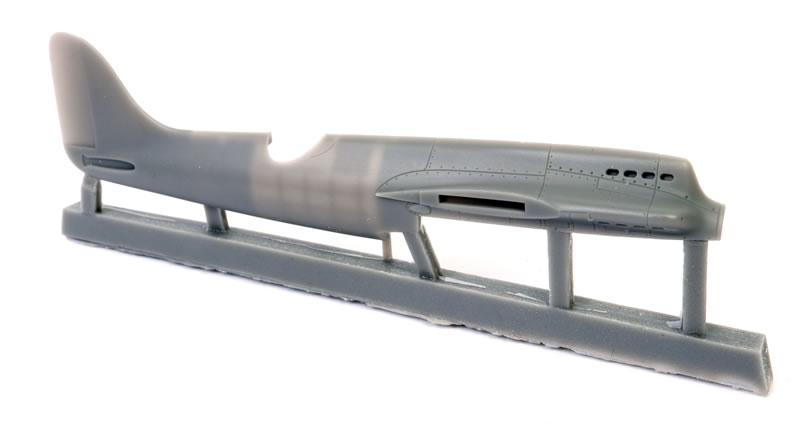
The kit is presented in a strong top-opening box in which the parts are grouped in zip-lock bags all wrapped in bubble-wrap. The main parts are dark grey resin castings with no sign of warpage or bubbles, while the float struts are 3D printed within their own protective cage. The main components are attached to their casting blocks by fairly sturdy webs that will require some care to seperate. I was pleased to see that the faired float struts attachments to the fuselage are provided in a single shape to ease alignment issues. Also, the exhausts are provided with four spares in case the carpet monster needs a feed. A nice detailed interior is provided, not that much will be visible given the tiny cockpit entry.
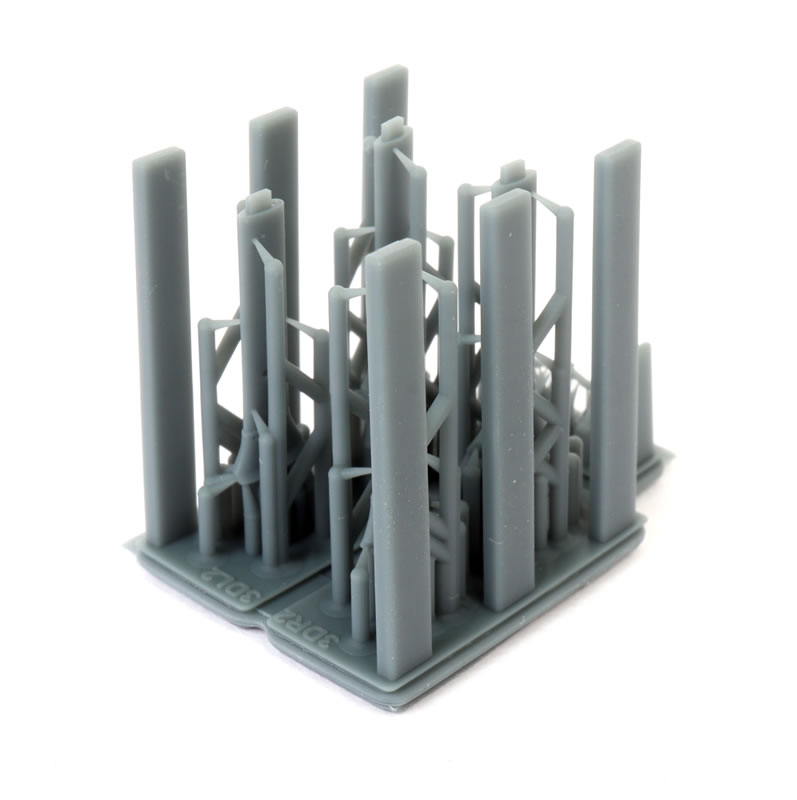
A set of PE parts provide some cockpit details as well as float spreaders - I would be tempted to file a rounded front and rear edge to these as they are a bit square.
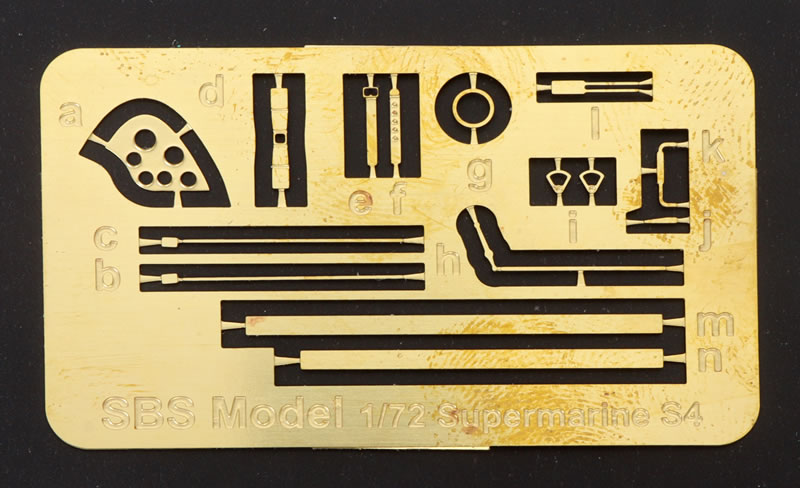
Also provided is a tiny clear resin windscreen and a film for the instruments behind the PE instruments panel.
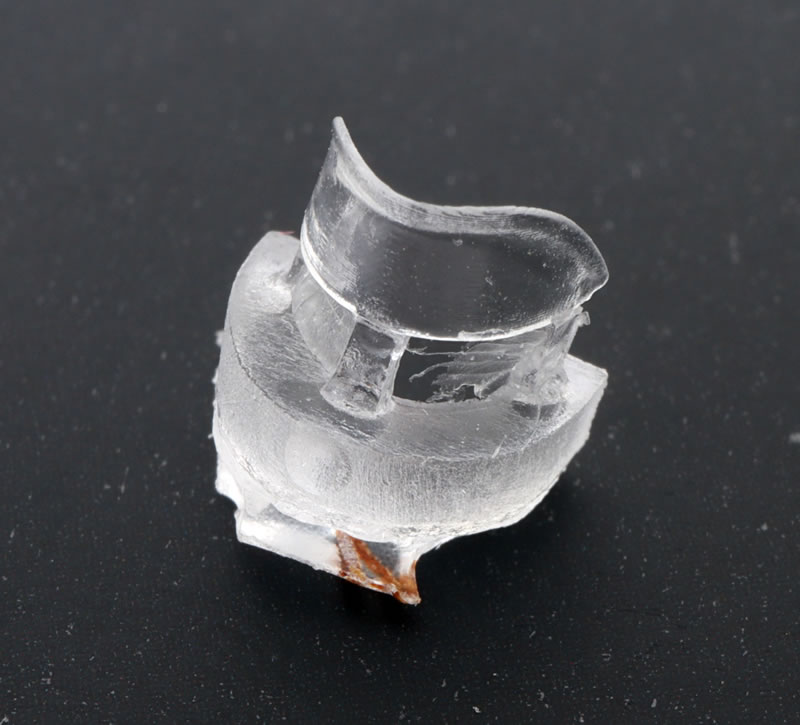
Instructions are on both sides of a folded A4 sheet and clearly set out the fifteen steps in putting this together. A number of tips and hints are provided to ease any areas when issues might arise and then will be very helpful during construction.
Markings
The decals are for the unsuccessful number 4 flown by Captain Henri Biard when he crashed into Chesapeake Bay. They are nicely printed with no carrier film and the two Union Flags on the tail
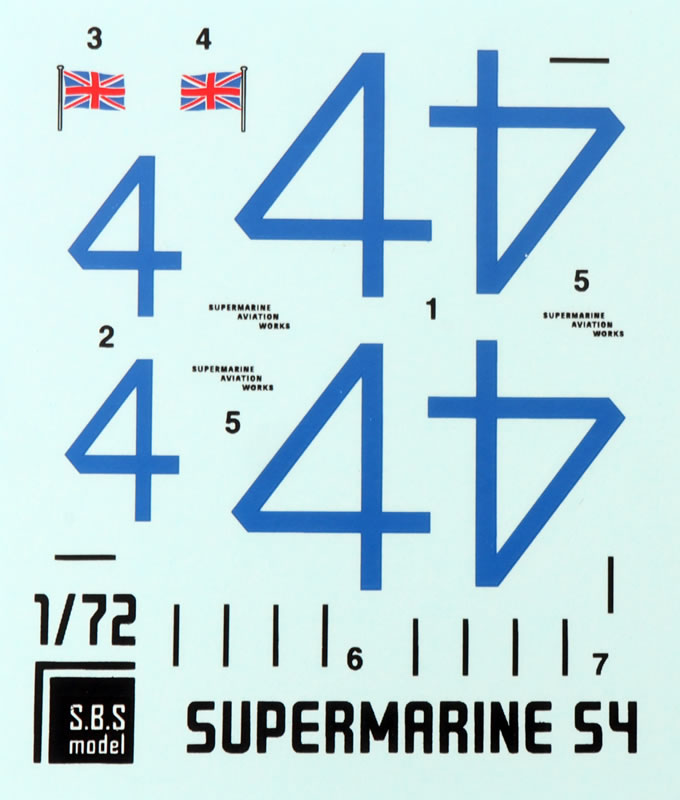
are perfectly in register. A double-sided A5 colour diagram gives the colour scheme in gloss white with the nose area in shiny silver. The brass radiators are provided as inserts and will save some careful masking as they can be popped in after painting. No interior colouring is provided and I suspect that it is a grey-silver finish with wooden coloured seat and instrument panel with black levers and control column. Little will be seen anyway.
This really is a lovely kit and if Schneider racers or merely beautiful aeroplanes are your thing, then get one while you can. Highly recommended.
Purchased by the reviewer from SBS Model
Review Text and Images Copyright © 2023 by Graham Carter
Page Created 11 July, 2025
Last updated
11 July, 2025
Back to HyperScale Main Page
Back to Reviews Page

|
